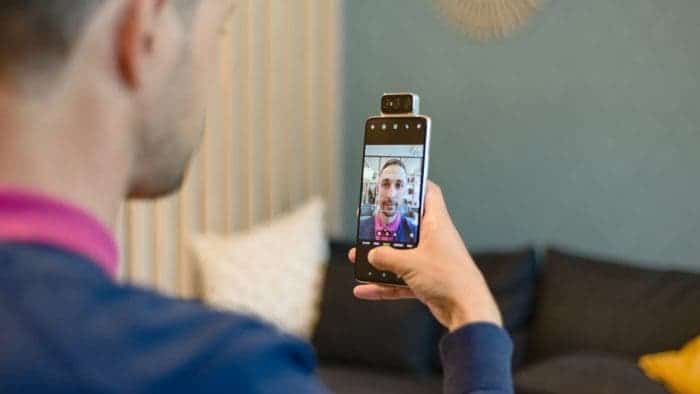As the month is coming to an end, our bi-monthly column for the “Top 10 smartphones for selfies” is here again. This is our second edition after the first edition hit the public domain in February. This column is bi-monthly because the frequency of release of smartphones with top-notch front cameras is not high. However, we will present the most attractive front camera smartphones in the industry.
If you are a selfie lover and this is the reason you buy smartphones, you will need to read the entire column. If you do not find anything interesting, click here to check out our previous columns on selfie smartphones. This list is an upgrade of the first edition and subsequent editions will always be an upgrade of their predecessor.
Selfie lovers lookout for a couple of things from their camera. They want high-quality images and features that are usually reserved for the rear camera. As of now, a 20MP sensor is about the lowest you will find on many great selfie phones. However, there are some devices especially from Apple, Huawei, Samsung, and Google that use way less than 20MP but still delivers great output.
When choosing the “best” selfie camera, so many things come into play. It is way beyond the pixel size, we also look at the software optimization, beautification features, AI features, portrait mode, and several other capabilities.
Top 10 smartphones for selfies – Disclaimer
The devices in the list are, in our opinion, the best devices for taking selfies. If you are a selfie freak or you buy your smartphones for their selfie ability, then check out our list with good recommendations.
1. Huawei Mate 40 Pro
There is a reason why the Huawei Mate 40 Pro is on top of DxOMark’s selfie camera rating with 104 points. This smartphone uses some of the best selfie camera optimizations in the industry. In our previous edition, we listed the Huawei P40 Pro+ which also has a great selfie camera. Nevertheless, Huawei Mate 40 Pro offers much more
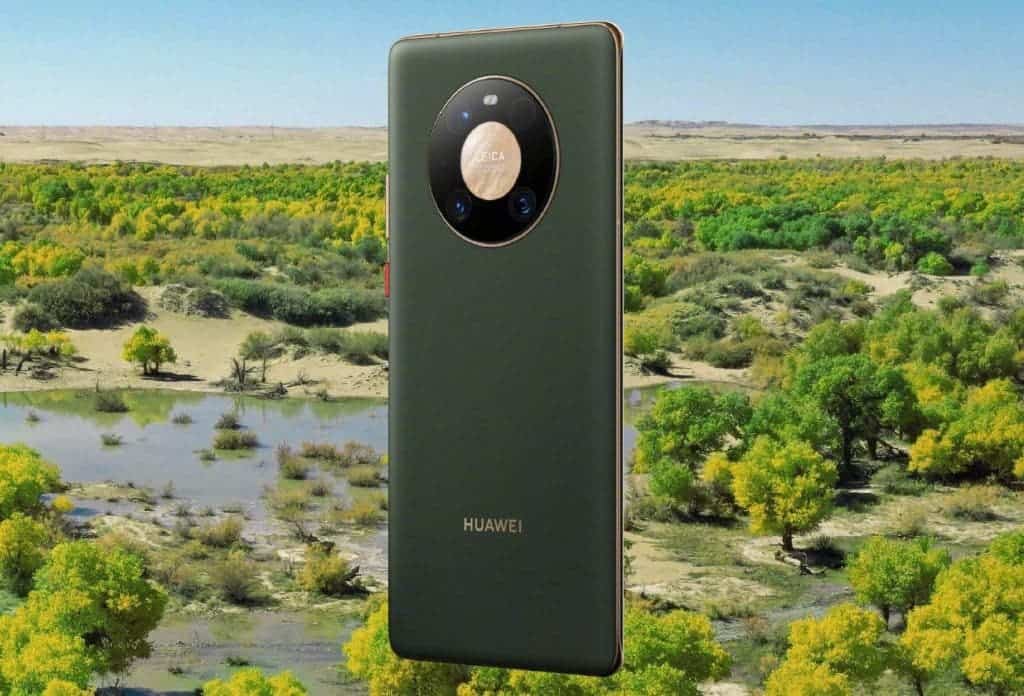
Key front camera specifications:
- Primary 13 MP 1/2.8″ sensor
- f/2.4 – aperture lens with 18 mm-equivalent focal length
- Time-of-flight camera for depth estimation
- Fixed focus
- Display-flash
- 4K video at 30fps
The Huawei P40 Pro comes with Face Beautification. With this feature, you just relax and let the phone do all the editing for you. One of the strengths of the Huawei P40 Pro is its noise reduction, good colour exposure, and excellent bokeh. With the dedicated IR sensor, the bokeh shots are nothing short of excellent. This sensor provides accurate depth estimation and masking around the subject during background blur. While the focus is great, it is probably the only aspect of this camera that the industry has better. Nevertheless, the focus capture faces perfectly at close range but appears to lose details as the distance gets longer (even using a selfie stick).
Whether you are dealing with indoor or outdoor shooting, the Huawei Mate 40 Pro+ is pretty impressive. The accurate autofocus and image stabilization make this camera even more attractive. Overall, there is very little or nothing to complain about with the Huawei Mate 40 Pro+
Huawei Mate 40 Pro succinct spec preview
Before you fall in love with any Huawei device presently, it’s important to know that it does not come with Google Mobile Services. This means that you can have access to Google Play Store. No Gmail, Google Map, YouTube, nothing. Thus, if you are living outside China, you may want to think about this before you consider this device. Although Huawei has HMS, which is supposed to be an alternative for GMS, it is not quite at GMS’s level and is still lacking some relevant apps. However, if GMS is not a problem, this smartphone has some interesting specs
The Huawei Mate 40 Pro comes with the 5nm Kirin 9000 SoC coupled with 8GB of RAM and 128GB/256GB/512GB of UFS 3.1 internal storage. Furthermore, this device uses a 6.76-inch display that supports 1344 x 2772 pixel resolution as well as a 90Hz refresh rate. Under the hood, there is a 4,200 mAh battery that supports a 66W fast charge, 50W wireless charging, and 5W reverse wireless charging. The battery department is one of the selling points of this smartphone. As of now, there are not many smartphones with 40W wireless charging capacity in the industry.
2. Asus Zenfone 7 Pro
It is not a surprise that Asus’s latest flagship, Zenfone 7 Pro makes the list this time. This is because the selfie camera of this smartphone is basically the rear camera. The Asus Zenfone 7 Pro comes with a rotating camera design such that the rear camera module can rotate to the front for selfies. This, it ditches the regular smartphone design of a set of cameras on the rear and another in front. The implication of this is that the front camera uses the same camera hardware as the rear. Obviously, it will be hard to beat.
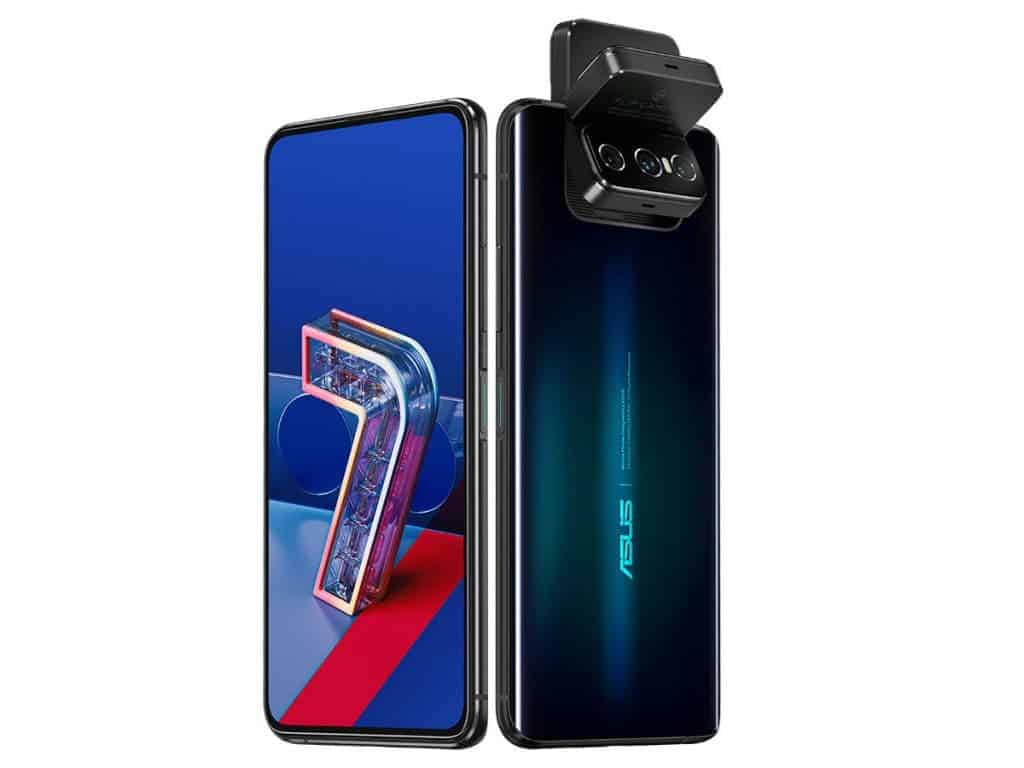
Key front camera specifications:
- Rotating triple-camera
- Primary 64 MP 1/1.72″ sensor, an f/1.8-aperture lens with 26 mm-equivalent focal length, PDAF
- Ultra-wide: 12 MP 1/2.55″ sensor, f/2.2-aperture lens with 16.6 mm-equivalent focal length, PDAF
- Tele: 8 MP sensor, an f/2.4-aperture lens with 80 mm-equivalent focal length, PDAF
- 4320p video at 30 frames per second (8K) (tested at 4K/30 fps)
- Dual-LED flash
- Qualcomm Snapdragon 865+ chipset
The front camera of the Asus Zenfone 7 Pro has a triple camera setup. This includes a 64 MP Quad-Bayer sensor, a 12 MP ultra-wide, and an 8MP telephoto camera. We can see the rest of the details in the specs sheet above.
Looking at the camera performance, this smartphone ticks all the boxes for still images. It comes with excellent exposure in all environments (light or dark), a wide dynamic range as well as accurate colors with nice skin tones. The large sensor outputs excellent details and the texture is overkill for a front camera. The bokeh effect is perfect and for each image, the noise level is nonexistent in the user’s face but slightly available in the background.
The Zenfone 7 Pro autofocus system is one of the best in the industry for front cameras. Thus, there is always an excellent focus irrespective of the shooting distance.
In terms of its video quality, this device is the best globally. This is because it outputs excellent texture and details. Even in low light conditions, it has a very good exposure where its competitors struggle. Just like in the images, for videos, there is little or no noise
Asus Zenfone 7 Pro succinct spec preview
For users who will want more information besides the front camera, here is a brief description of other features. The Asus Zenfone 7 Pro comes with a 6.67 inch AMOLED display that supports a 90Hz refresh rate and resolution of 1080 x 2400 pixels. This smartphone comes with the Snapdragon 865 5G+ SoC (Adreno 650) and supports 8GB of RAM and 256GB of UFS 3.1 storage. To keep its lights on, this device uses a huge 5000 mAh battery that supports 30W fast charging. According to the company, this smartphone gets 60% in 34 min and 100% in 93 min. Other features include 5G wireless connectivity, Wi-Fi, and Bluetooth 5.1.
3. Huawei P40 Pro
If the Huawei P40 Pro is better than the Mate 40 Pro, it would be because of its double pixel size. The Huawei P40 Pro comes with a 32MP 1/2.74-inch sensor and a 26mm-equivalent lens with f/2.2 aperture. Furthermore, this smartphone comes with a dual-camera setup on the front. This is the latest trend in the smartphone market. The camera comes with a bokeh mode that uses a secondary infrared (IR) camera for depth sensing and also supports autofocus.
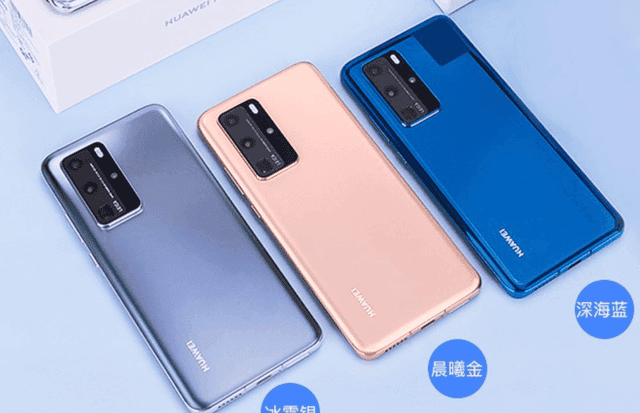
Key front camera specifications:
- Dual front camera
- 32MP 1/2.74-inch sensor with 0.8µm pixels
- 26mm-equivalent f/2.2-aperture autofocus lens
- IR 3D sensor for depth estimation and autofocus
- 4K 2160/30fps video
Before the arrival of the Huawei Mate 40 Pro, the P40 Pro was on top of DxOMark front camera ranking for many months. This smartphone comes with top-notch focus with no instabilities. At close and medium range, the capture of users’ faces is very sharp. At longer distances, the faces are sharp, however, there is some noise in the background. Despite the loss of background details from a longer range, the performance of this device’s front camera is still perfect.
The exposure, colour, flash, noise, and bokeh effect are the strong parts of this smartphone. With the Huawei P40 Pro dedicated IR sensor ensures that its bokeh shots are very impressive. The depth estimation for this device is good and it perfectly eliminates all objects in the background with its blur.
In addition to the top performance of the front camera for images, the video performance is also excellent. According to users, the video and 4K capacity of this smartphone are excellent. It has top exposures, accurate autofocus, effective stabilization as well as pleasant colours. Even in low light conditions, the 4K front camera is not entirely the best but its top quality. If you need good front camera output in terms of images and videos, the Huawei P40 Pro is a smartphone to consider.
Huawei P40 Pro succinct spec preview
This smartphone comes with a 6.58 inch AMOLED display that supports a resolution of 1200 x 2640 pixels (~441 PPI density). Under the hood, we have a Qualcomm Snapdragon Kirin 990 5G (7 nm+) coupled with up to 8GB of RAM and 128GB/256GB/512GB of internal storage. On the rear, it uses a quad camera setup. It has a 50MP main camera, a 40MP (ultrawide), 12MP periscope telephoto, and a ToF 3D sensor. To keep its lights on, this device uses a 4200 mAh battery that supports 40W fast charging, 27W wireless fast charging, and 27W reverse fast reverse wireless charging. This device comes with EMUI 10.1 on top of Android 10 with no Google Play Services.
4. Vivo V21
Chinese manufacturer, Vivo, officially launched this smartphone a few days ago. This smartphone is the company’s latest mid-range device and the selfie camera is the major highlight of this smartphone. How many phones do you know that have OIS stabilization on their front-facing camera? Well, this mid-range phone has that. There is a 44MP front camera with an f/2.0 aperture. The selfie camera supports OIS, dual-LED flash, and 4K video recording.
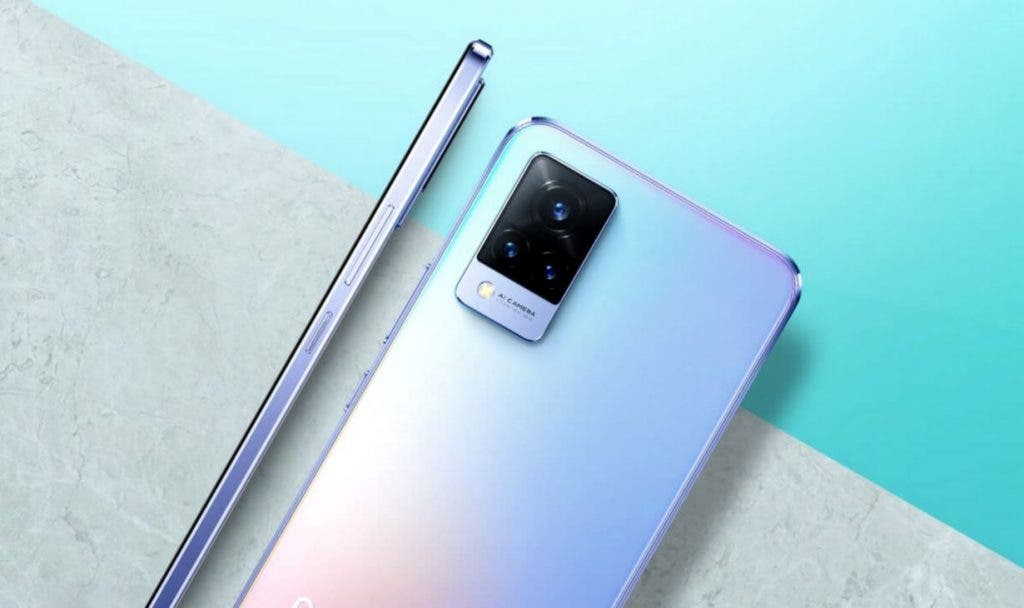
Key front camera specifications:
- Primary 44 MP 1/3.2″ sensor, 1.22µm pixels
- F/2.0 – aperture lens with 26 mm-equivalent focal length
- Dual-pixel PDAF
- Display flash
- 4K@30fps, 1080p@30fps
This device offers good lowlight photos and to make this more interesting is the stabilization during shooting. The stabilization feature also extends to videos. The company also did some optimization with its selfie camera. The beauty mode comes with some skin smoothening even when the beauty mode is off. This is a problem for some people because it means that the front camera technically does not capture natural images. However, users can edit the images to make them look more realistic. This should not be the case for excellent smartphones for selfies.
Vivo V21 succinct spec preview
The Vivo V21 comes with a 6.44-inch 2404×1080 Full HD+ AMOLED display. It has some fancy features including 800 nits brightness, HDR 10+, 90Hz refresh rate, and an In-display fingerprint sensor. Unfortunately, you will have to settle for a teardrop notch, which is not the most appealing notch to me. Coming to the rear, it has a triple rear camera setup comprising 64MP Primary with f/1.79 aperture and OIS, 8MP 119° ultra-wide-angle lens with f/2.2 aperture, and finally a 2MP macro camera with f/2.4 aperture.
The phone has 8GB LPDDR4x RAM and up to 256GB of internal storage. Like iQOO 7, this phone also has an extended RAM technology that gives 3GB additional RAM. Vivo V21 has a battery capacity of 4000mAh with 33W fast charging support. The battery is not so big, but the perk here is that the device is slim and light. The phone is just 7.29mm thick and weighs 176g. It comes out of the box with Funtouch OS 11.1 based on Android 11.
5. OnePlus 8 Pro
The OnePlus 8 Pro is quite good with its selfie camera. Although, a little bit behind the OnePlus Nord which is part of our first edition, this device is quite good with its selfie performance. This smartphone comes with a punch-hole display that houses its 16MP front camera. The main 16MP camera uses a Sony IMX616 sensor but it lacks any form of stabilization. However, the images are still bright and clear, especially in a bright environment.
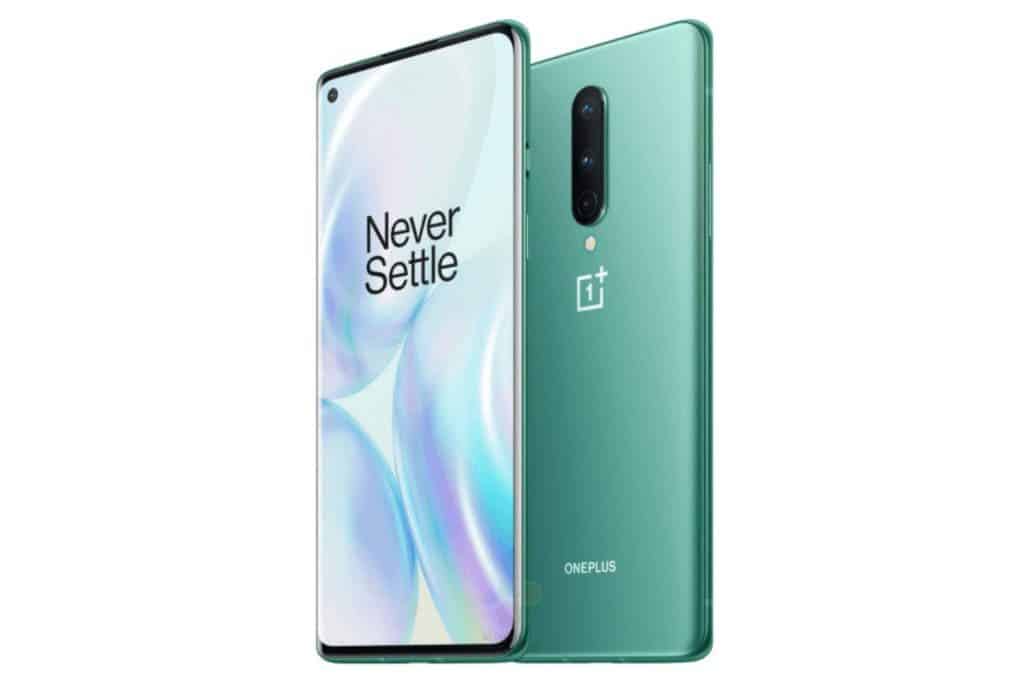
Key front camera specifications:
- Primary 16 MP 1/3.06″ sensor
- F/2.5-aperture lens with 29 mm-equivalent focal length
- Fixed focus
- Display-flash
- 1080p video at 30 fps
The exposure of the front camera is very good and the screen doubles as its flash. However, when the flash is active, there is some loss of details in the images. Without external light sources, the colour output is good but a slight yellow/green cast is visible with ambient tungsten light. This device also supports portrait images but the blur is not very natural and there is no way of adjusting it.
The OnePlus 8 Pro camera is even more impressive for capturing selfie videos. No matter the light condition, the OnePlus 8 Pro exposure is great. Its dynamic range is good but bright backgrounds tend to be overexposed. Generally, the skin tones are usually pleasant and appealing to view.
Well, on the low side, the OnePlus 8 Pro comes with a fixed-focus lens but the performance is still acceptable. Its small sensor and moderate aperture (the OnePlus 7 Pro went with a faster f/2 lens) help keep the depth of field deep. Overall, there is a drop of details in a low light environment and some noise is visible even in good light. This is a down point of this smartphone.
OnePlus 8 Pro succinct spec preview
The OnePlus Nord uses a 6.78 inch AMOLED display that supports a 120Hz refresh rate and resolution of 1440 x 3168 pixels (~513 PPI density). This smartphone also comes with the Snapdragon 865 5G (7 nm+) and supports 8GB of RAM and 128GB/256GB of UFS 3.0 storage. It uses a quad-rear camera setup. It has a 48MP main camera with 48MP (ultrawide), 5MP (color filter), and 8MP (telephoto) sensors. To keep its lights on, this device uses a 4510 mAh battery that supports 30W fast charging. IT also supports 30W wireless fast charging as well as 3W reverse wireless charging. Other features include 5G wireless connectivity, Wi-Fi, Bluetooth 5.1, and OxygenOS 111 (Android 10 upgradable to Android 11).
6. iPhone 12 Pro
On the front of the iPhone 12 Pro is a 12 MP 1/3.6-inch sensor behind a 23 mm-equivalent f/2.2 lens. It also comes with a Structured Light (SL) sensor for depth sensing to simulate background blur. Apple almost always uses a great selfie camera. In fact, we can consider Apple as one of the few brands in the industry with “many” smartphones for selfies. Although the competition is getting tougher, Apple is still holding on to its own. On paper, the iPhone 12 Pro selfie camera might not sound that special. After all, it comes with a 12MP f/2.2 sensor. However, the optimizations and quality are top-notch.
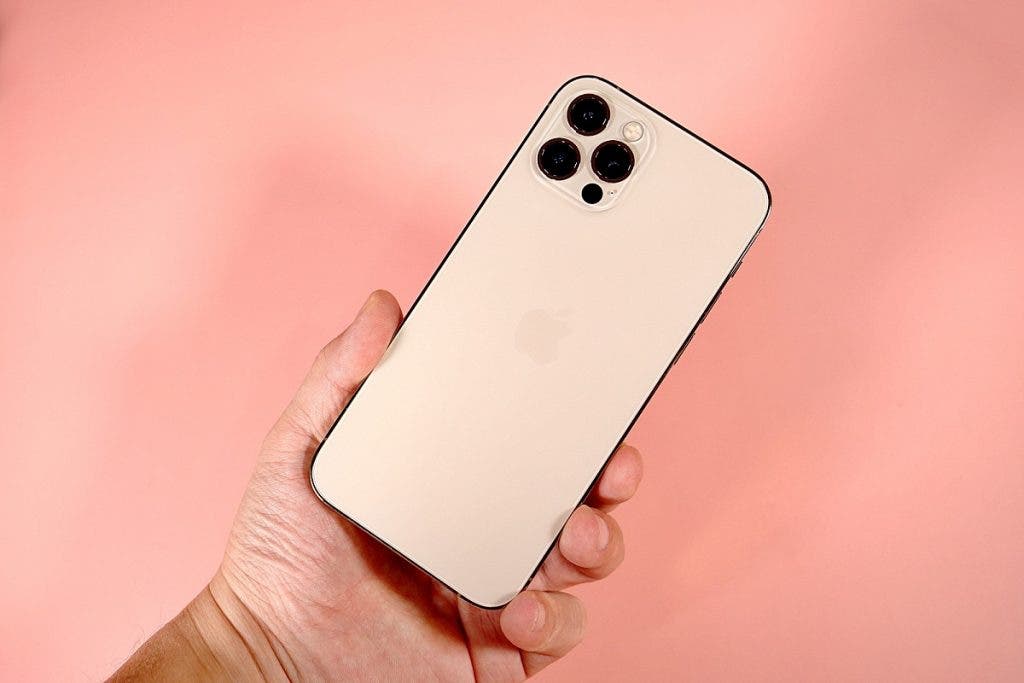
Key front camera specifications:
- Dual front camera
- 12 MP 1/3.6-inch sensor with 23 mm-equivalent f/2.2-aperture lens
- SL 3D sensor for depth estimation
- 4K 2160p Dolby Vision HDR video at 24/30/60 fps, 1080p at up to 120 fps, gyro-EIS
This device is great for quality portrait images with a depth sensor. The night mode feature is fairly good and a low-light environment is surely not a problem. Its autofocus feature ensures that faces are super clear but its performance is optimized for a 30cm to 90 cm range. However, above 90 cm, say at 120 cm, the depth of field sensor ensures that the selfies remain sharp. Looking at the bokeh, stabilization modes, and other features, the iPhone 12 Pro obviously stands out as one of the top-notch smartphones for selfies in the industry presently.
iPhone 12 Pro succinct spec preview
The iPhone 12 Pro comes with a 6.1 inch Super Retina XDR OLED that supports 1170 x 2532 pixel resolution and a 60Hz refresh rate. Under the hood, this smartphone uses the Apple A14 Bionic 5nm chip. This device uses 6GB of RAM and 128GB/256GB/512GB of internal storage. On the rear, it has a triple camera setup, all 12MP sensors. It includes a wide-angle, telephoto, an ultrawide angle, and a TOF 3D LiDAR sensor. The battery size is only 2815 mAh and it supports 20W fast charging and 15W wireless charging.
7. Vivo X60 Pro
There is no doubt about Oppo’s performance in the selfie camera department. In fact, this company as well as Vivo places more emphasis on the front camera performance. These days, Oppo hardly uses a selfie camera below 20MP. The Vivo X60 Pro comes with a 32 MP front camera and the output is great.
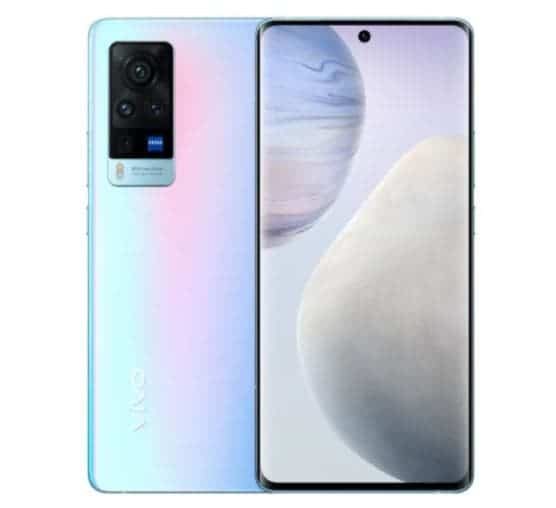
Key front camera specifications:
- Primary 32 MP
- F/2.5, 26mm (wide), 1/2.8″, 0.8µm
- HDR
- 1080p@30fps
The front camera supports HDR and 1080p@30fps videos. However, it lacks support for 4K videos which is a down point of this device. However, this device has some interesting features like portrait video, colour pop mode, and Night Mode tripod setting that make it stand out. Interestingly, the video mode of this device supports Ultra Steady stabilization and anti-shake algorithms. Not many manufacturers include stabilization features for the front camera. The final output is quite excellent with a focus on the face.
Just like other Vivo devices, this smartphone comes with an aggressive EIS algorithm. Thus, its 1080p videos are quite with this feature. Although there are a couple of smartphones for selfies above this device, it delivers just enough to be on this list.
Vivo X60 Pro succinct spec preview
This smartphone comes with a 6.56 inch AMOLED display that supports 1080 x 2376 pixels resolution. This smartphone also comes with the Snapdragon 870 5G (7 nm) and supports 12GB of RAM and 256GB of UFS 3.1 storage. It uses a triple-rear camera setup. It has a 48MP main camera with 13MP (ultrawide), 13MP (telephoto) sensors. To keep its lights on, this device uses a 4200 mAh battery that supports 33W fast charging. Other features include 5G wireless connectivity, Wi-Fi, Bluetooth 5.1, and Funtouch 11.1 (Android 11).
8. Google Pixel 5
Some readers will finally get a sigh of relief after seeing the Google Pixel 5 on this list. Not that there is anything special with the Google Pixel 5, but there is something special with Google Pixel cameras. Whoever knows smartphones should know that when it comes to camera optimization, Google is the best in the business. The front camera of the Google Pixel 5 does not disappoint as expected.
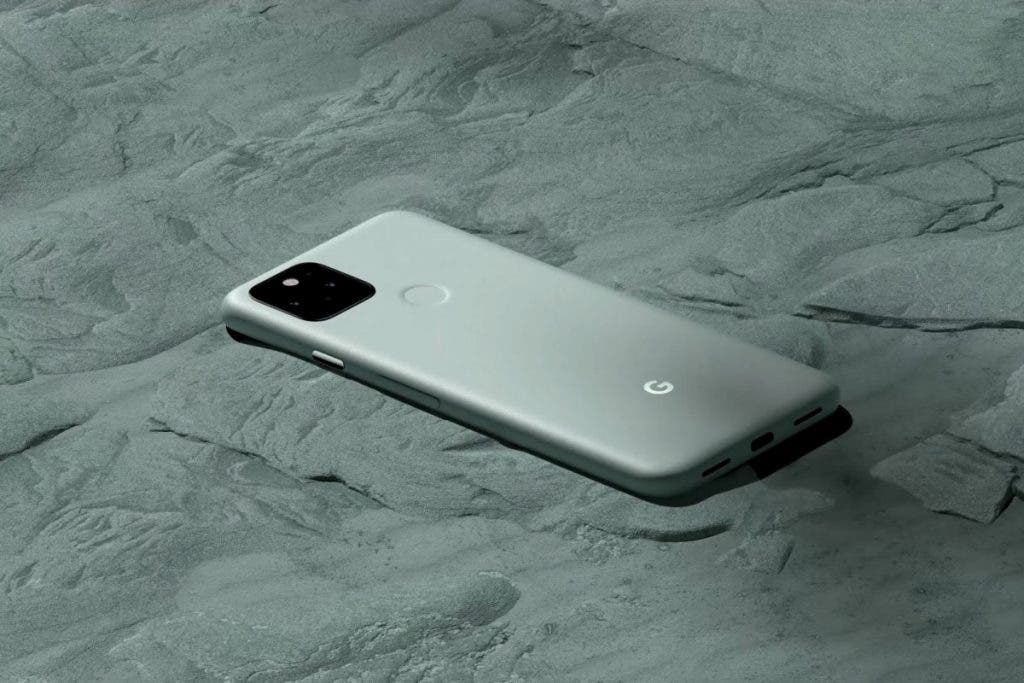
Key front camera specifications:
- 8MP 1/4.0″ sensor
- f/2.0-aperture lens with 24 mm-equivalent focal length
- Fixed focus
- Display-flash
- 1080p video at 30 fps
With only 8MP upfront, this smartphone has the smallest pixel size on this list. However, its software optimization is second to none. This smartphone is supposed to be Google’s flagship but the company had to cut some corners to reduce the cost. This of course affected the overall performance of the camera of this device.
Overall, there is not much to complain about regarding the front camera of this device. The colour output, white balance, focus, and other features are quite decent. More importantly, is that this camera puts the noise under perfect control even in low-light environments.
According to DxOMark, “the Pixel’s bokeh simulation offers good depth estimation, with only minor artifacts around the foreground subject. However, there is no blur gradient and spotlights in the background are rendered with low contrast, resulting in a slightly unnatural effect”.
Google Pixel 5 succinct spec preview
To reduce cost, Google opted to use the Snapdragon 765G, which is not entirely bad. However, relative to its competitors, it is a step behind. This smartphone comes with a 6-inch display that supports 1080 x 2340 pixel resolution as well as a 90Hz refresh rate. This device offers 8GB of RAM and 128GB of internal storage. Furthermore, this device comes with a 4,080 mAh battery that supports an 18W fast charge, 12W wireless charging, and 5W reverse wireless charging.
9. Samsung Galaxy S20 Ultra
The Samsung Galaxy S21 Ultra made our first edition list. However, this does not mean the previous generation Galaxy S20 Ultra is bad. In fact, Samsung padded the Galaxy S20 Ultra front camera such that it is not much different from the S21 Ultra. Samsung designed the front camera of this device such that it can capture both cropped and full-frame formats. By default, it captures images in its cropped format but this format has images with a lower resolution.
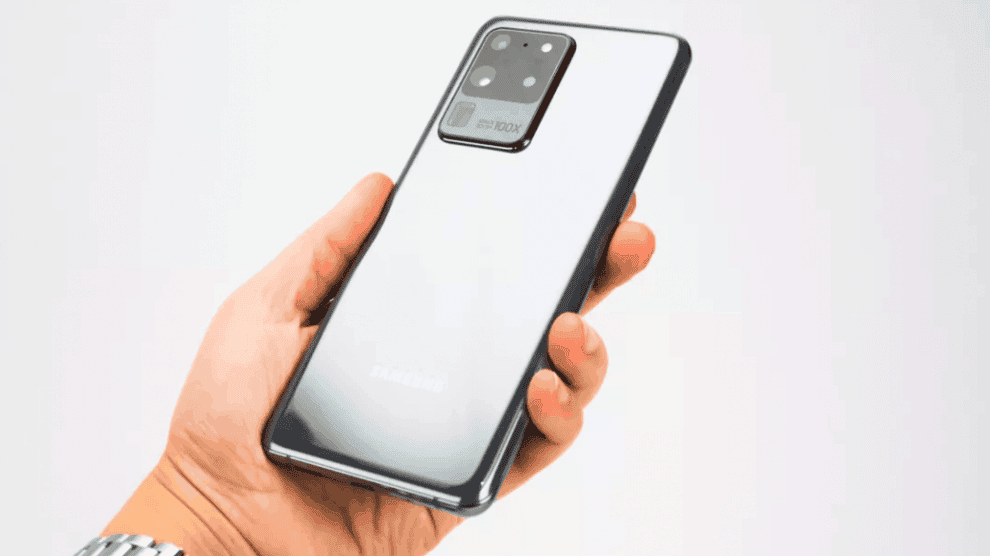
Key front camera specifications:
- 40MP 1/2.65-inch Quad-Bayer sensor with 0.7µm pixels
- 25mm-equivalent f/2.2-aperture lens (no OIS)
- Default cropped 6.5MP output at 32mm-equivalent focal length
- Optional uncropped 10MP wide-angle output at 25mm-equivalent focal length
- Automatic wide-angle switching for dual or group selfies
- AI enabled by default
- PDAF autofocus
- 4K/60fps (1080p/30fps at default settings)
Whatever feature you can think of such as portrait mode, night mode, stabilization, and others, this device got you covered. The video end is also great but Samsung added something to make it better. The South Korean manufacturer calls it the “Director’s View”.
This smartphone does not have a dual front camera sensor like many devices on the list, however, it can capture images at a longer focal length. Its 40MP 1/2.65-inch Quad-Bayer sensor with 2×2 pixel binning outputs 10MP images with a 25mm-equivalent focal length in its wide-angle mode. This sensor selects automatically when there are two or more faces in the field of view.
Samsung Galaxy S20 Ultra succinct spec preview
This device comes with an Exynos 990 (7 nm+) SoC. It uses a 6.9-inch Dynamic AMOLED display that supports a 120Hz refresh rate and 1440 x 3200 pixel resolution. In addition, it has 12GB/16GB of RAM and 128GB/256GB/512GB of UFS 3.1 internal storage. On the rear, it has a quad-camera setup with a 108MP main sensor that supports 8K videos. Furthermore, this device comes with a 5,000 mAh battery that supports a 45W fast charge, 15W wireless charging, and 4.5W reverse wireless charging.
10. Huawei nova 6 5G
The interesting part about the Huawei nova 6 5G is that it is the cheapest smartphone on this list. In fact, it costs less than half of many of the devices on this top 10 smartphones for selfies (second edition). On the front, this device comes with a dual-camera setup like many devices in the market. The main camera is a 1/2.8-inch 32MP image sensor. This camera has a 26mm-equivalent field of view and an f/2.2 – aperture lens. Like most devices in the market, it supports 4K videos.
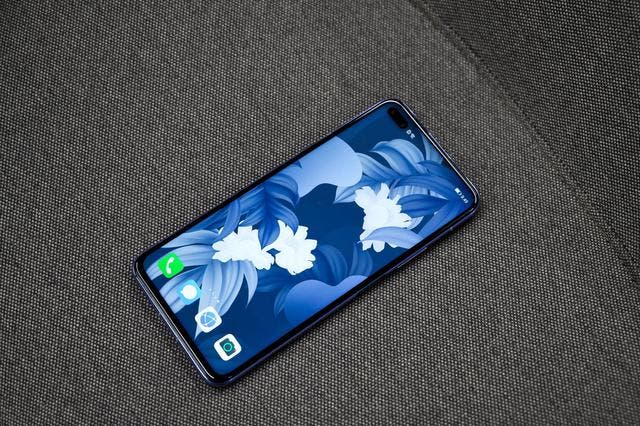
Key front camera specifications:
- Dual front camera
- 1/2.8-inch 32MP sensor with f/2.2 aperture lens, 26mm equivalent
- 8 MP, f/2.2, 17mm (ultrawide)
- Secondary wide-angle and depth camera
- PDAF
- 2160p at 30 frames per second (4K)
Irrespective of the lighting condition, the Huawei nova 6 5G delivers a pretty acceptable exposure. This is a result of the wide dynamic range and good HDR processing. These features also make it possible for this device to capture good images in high-contrast situations
The white balance and skin tones are pretty accurate but for indoor images, there are some colour casts. Interestingly, with its optimizations, it manages to keep the noise under control. Furthermore, this device has a beautification filter that smoothes skin. Despite the smoothening, it still retains the details and preserves the natural facial features.
Huawei nova 6 5G succinct spec preview
This device comes with a Kirin 990 (7 nm) SoC. It uses a 6.57-inch LTPS IPS LCD display that supports 1080 x 2400 pixel resolution. In addition, it has 8GB of RAM and 128GB/256GB of internal storage. On the rear, it has a triple camera setup with a 40MP main sensor. Furthermore, this device comes with a 4,200 mAh battery that supports a 40W fast charge.
Conclusion
Here is our top 10 smartphones for selfies list for the months of March and April. Please note that these are the smartphones that we consider great for selfies. There is no particular order of arrangement thus we do not consider the smartphone in No 1 as better than the one in No 10. Nevertheless, if you get any of these devices for selfie purposes, we are sure there won’t be any regrets. We will have the third edition of the top 10 smartphones for selfies in June. Obviously, there will be some new devices in the market that will make the list by then.
Feel free to check our First Edition if you want more options, we’ll be back in June!… If you need to keep a tab on all our editions on the top 10 smartphones for selfies, you can click here.
Like we said in the first edition, our target is not just to list smartphones but to add as many details as possible to buttress our point. If you have any contribution(s) to this column, let us know in the comment section below.

